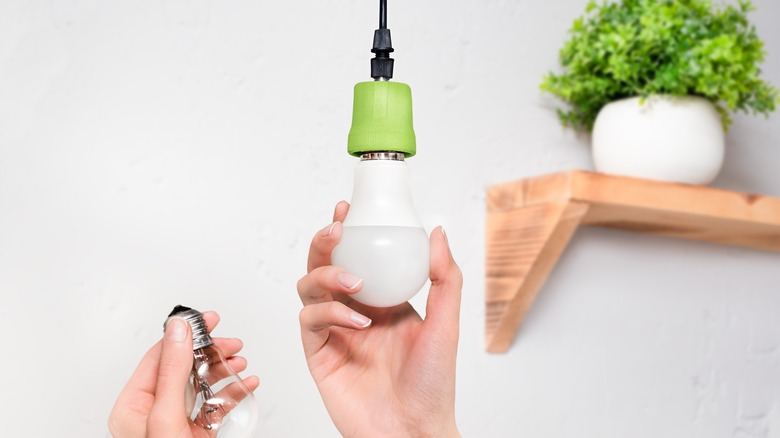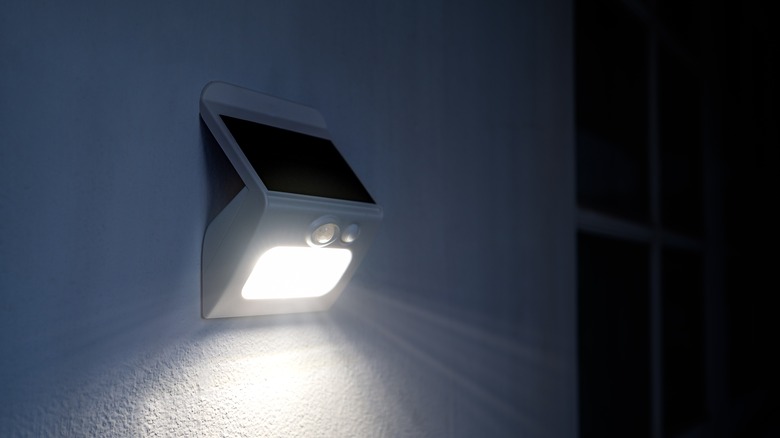Here's What LED Stands For (And Why It's Important In Lighting And Displays)
British inventors began experimenting with electric lighting in the 1830s, working on so-called arc lamps, while other scientists around the world focused on developing a functioning incandescent lamp. The first real breakthrough came decades later, in 1880, when American inventor Thomas Edison patented and commercialized the first electric light bulb.
These inventions laid the groundwork for what we now take for granted — the ability to instantly illuminate a room with the flip of a switch.
Electric lighting has evolved considerably over the years, with new technologies creating space for more innovation, versatility, and energy efficiency. LED lights are arguably the best example of the progress that has taken place. They are technologically superior, have a longer lifespan, and are all around more efficient — you can actually save a nice chunk of change by switching to LED bulbs. But how exactly does LED technology work? What does LED stand for? What can LEDs be used for? Here's what you need to know.
Why are LEDs important?
For a start, let's explain what LED stands for. The "L" stands for light, "E" stands for emitting, and "D" stands for diode. A light-emitting diode is therefore a semiconductor that produces light when an electric current flows through it.
The first visible LED light was developed in 1962, by a General Electric engineer named Nick Holonyak. Yellow, green, and orange LED lights were developed with time, so LEDs became more common in advertising and traffic light systems. In the mid-1990s, the Japanese chemical engineering company Nichia began developing and marketing the world's first white LEDs.
LEDs have become very popular since then. In fact, research compiled by Statista suggests that 87% of all light sources in the United States will be LEDs by 2030. Though there are downsides to using LED lights, they are superior to traditional incandescent bulbs in most ways.
In addition, LEDs have been indispensable in electronics ever since HP introduced the first LED display in 1968. Smartphones, computers, home appliances, and various other types of electronic devices now rely on LED technology, and likely will for years to come.

